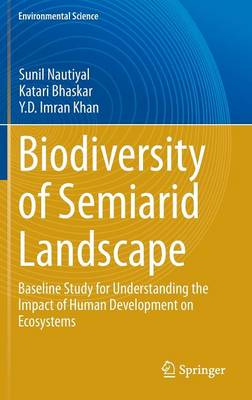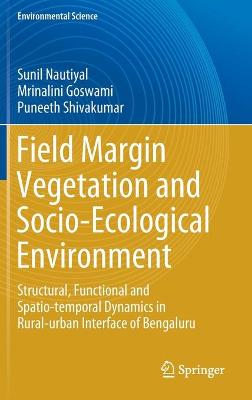Environmental Science
2 total works
Biodiversity of Semiarid Landscape
by Sunil Nautiyal, Katari Bhaskar, and Y.D. Imran Khan
This study presents authentic data compiled from field experiments and investigations, and provides a point of reference for any future changes associated with anthropogenic activity in semiarid ecosystems. Three years of continuous and rigorous empirical research on biodiversity (from phytoplankton to higher plants and from zooplankton to higher animals – all flora and fauna) in India’s semiarid region have culminated in this work.
Though there are many studies available on issues related to biodiversity, the majority cover either specific groups of plants or groups of animals; with the exception of this book, studies that include all flora and fauna including the phyto- and zooplanktons in a given ecosystem are not readily available.
Further, the book focuses on an extremely important topic, firstly because semiarid landscapes are highly vulnerable to climate change, and secondly because other developmental activities will be undertaken in the region in an effort to meet its energy requirements. As such, the results of the current study will provide a standard protocol for subsequent monitoring and mapping of biodiversity for conservation and management.
The book explores, quantifies and surveys plant and animal species from aquatic and terrestrial ecosystems, assessing and quantitatively analyzing the diversity indices of different vegetation strata. Further, it investigates the conservation status of each species (flora and fauna) in keeping with IUCN categories.
The study also examines landscape dynamics using RS and GIS for vegetation analysis, and discusses traditional ecological knowledge related to the use, conservation and management of biodiversity. As such, it offers a unique and valuable resource not only for researchers from the environmental/ecological sciences but also for conservationists and policymakers.
Field Margin Vegetation and Socio-Ecological Environment
by Sunil Nautiyal, Mrinalini Goswami, and Puneeth Shivakumar
This book has been produced as a part of the project ‘Social-Ecological Systems at the Indian Rural-Urban Interface: Functions, Scales, and Dynamics of Transition’. It addresses transition processes in agriculture and society triggered by urbanization, focusing on Bengaluru as an example of a rapidly growing megacity in India. Adopting a holistic, multidisciplinary approach embedded within a social-ecological systems research framework, it explores how the physical and socio-economic landscapes have led to changes in economic priorities, which have overpowered ecological and traditional priorities with regard to ecosystem governance. Allowing readers to gain a deeper understanding of this unexplored dimension of socio-ecological systems, this book is a valuable resource for international researchers, scholars and master’s students in the field of environmental science, socio-ecology, forestry and agriculture.

